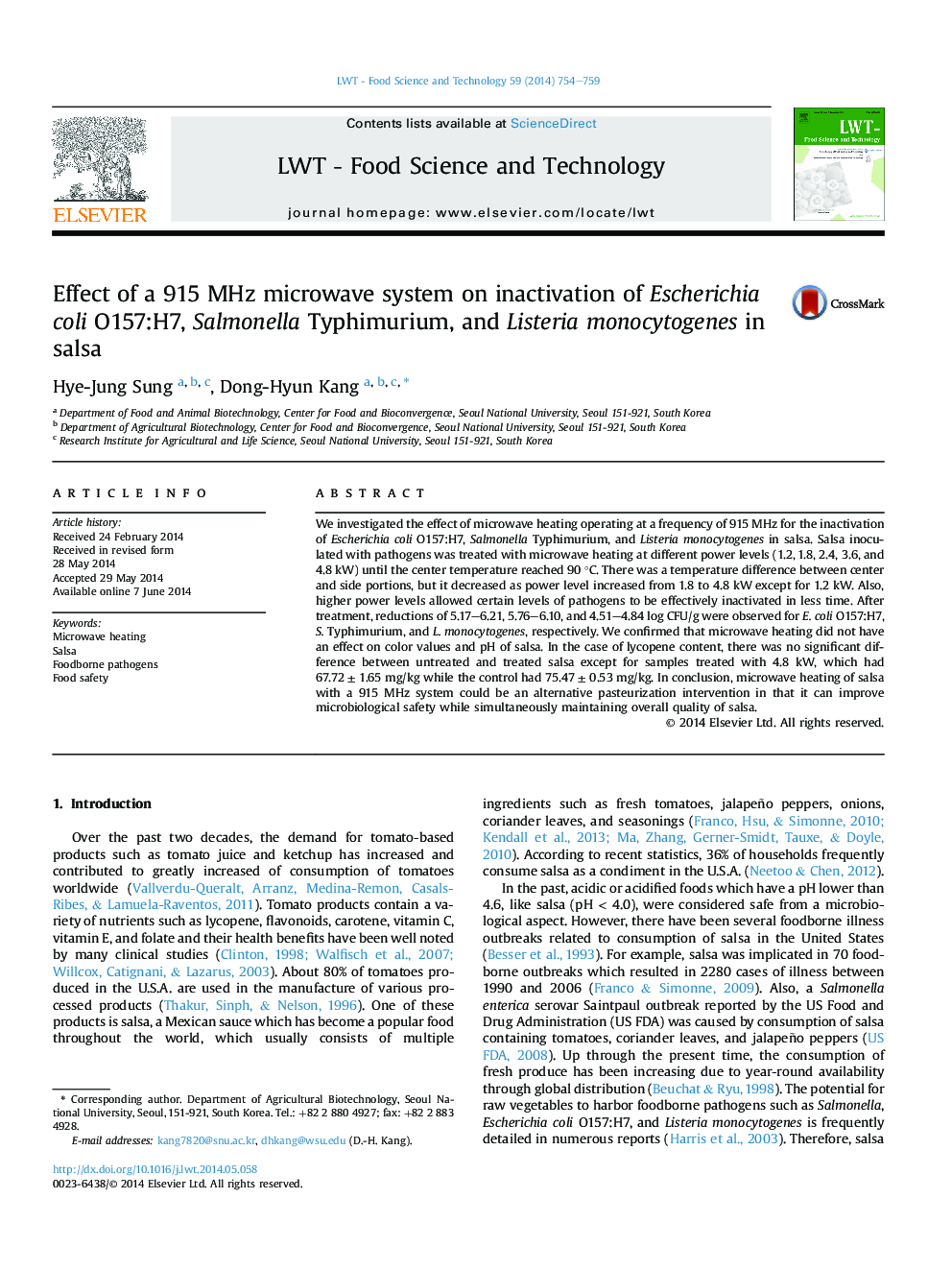| Article ID | Journal | Published Year | Pages | File Type |
|---|---|---|---|---|
| 6402555 | LWT - Food Science and Technology | 2014 | 6 Pages |
â¢Salsa containing pathogens was treated with a 915 MHz microwave heating system.â¢Microwave heating with different power levels effectively inactivated pathogens.â¢No significant change of color, pH and lycopene content was observed in general.
We investigated the effect of microwave heating operating at a frequency of 915 MHz for the inactivation of Escherichia coli O157:H7, Salmonella Typhimurium, and Listeria monocytogenes in salsa. Salsa inoculated with pathogens was treated with microwave heating at different power levels (1.2, 1.8, 2.4, 3.6, and 4.8 kW) until the center temperature reached 90 °C. There was a temperature difference between center and side portions, but it decreased as power level increased from 1.8 to 4.8 kW except for 1.2 kW. Also, higher power levels allowed certain levels of pathogens to be effectively inactivated in less time. After treatment, reductions of 5.17-6.21, 5.76-6.10, and 4.51-4.84 log CFU/g were observed for E. coli O157:H7, S. Typhimurium, and L. monocytogenes, respectively. We confirmed that microwave heating did not have an effect on color values and pH of salsa. In the case of lycopene content, there was no significant difference between untreated and treated salsa except for samples treated with 4.8 kW, which had 67.72 ± 1.65 mg/kg while the control had 75.47 ± 0.53 mg/kg. In conclusion, microwave heating of salsa with a 915 MHz system could be an alternative pasteurization intervention in that it can improve microbiological safety while simultaneously maintaining overall quality of salsa.
